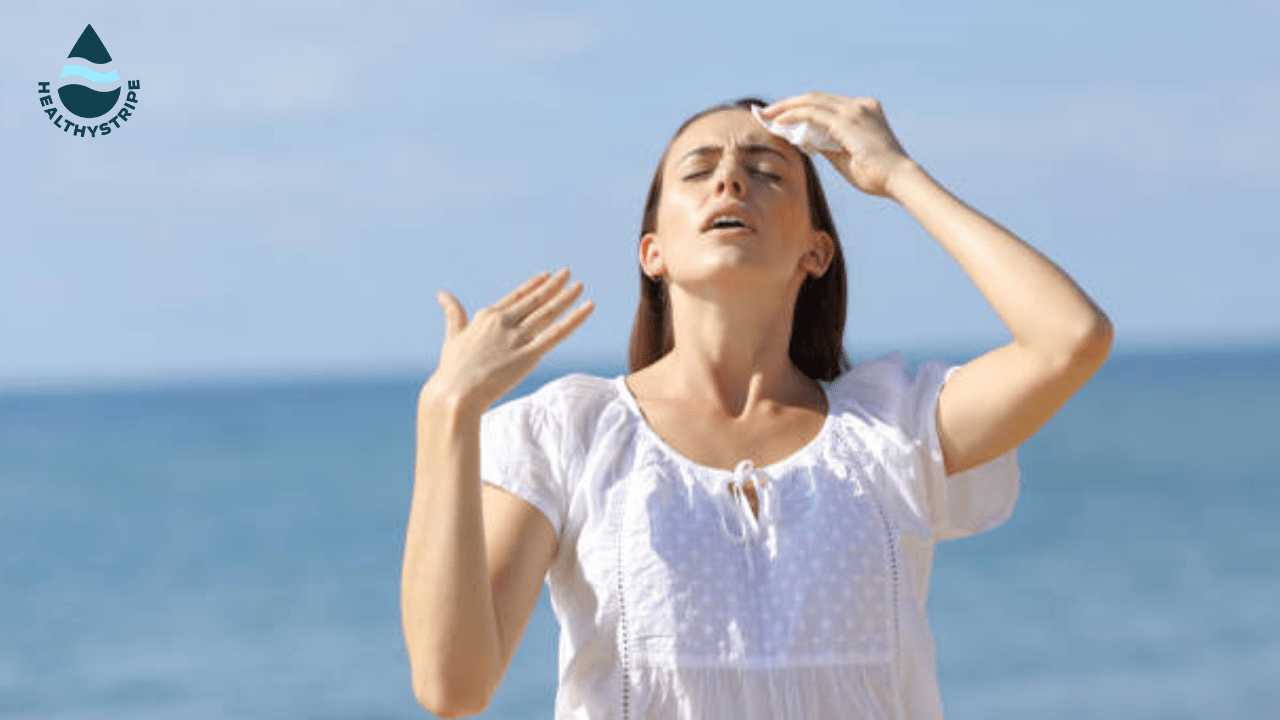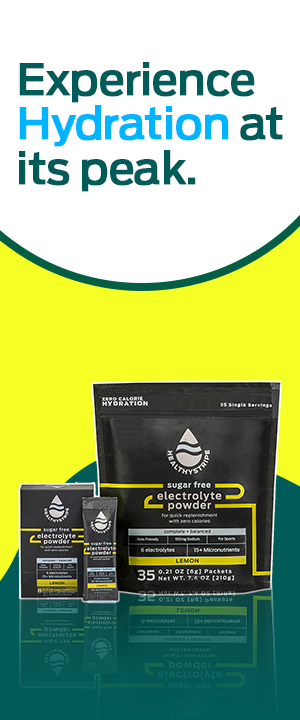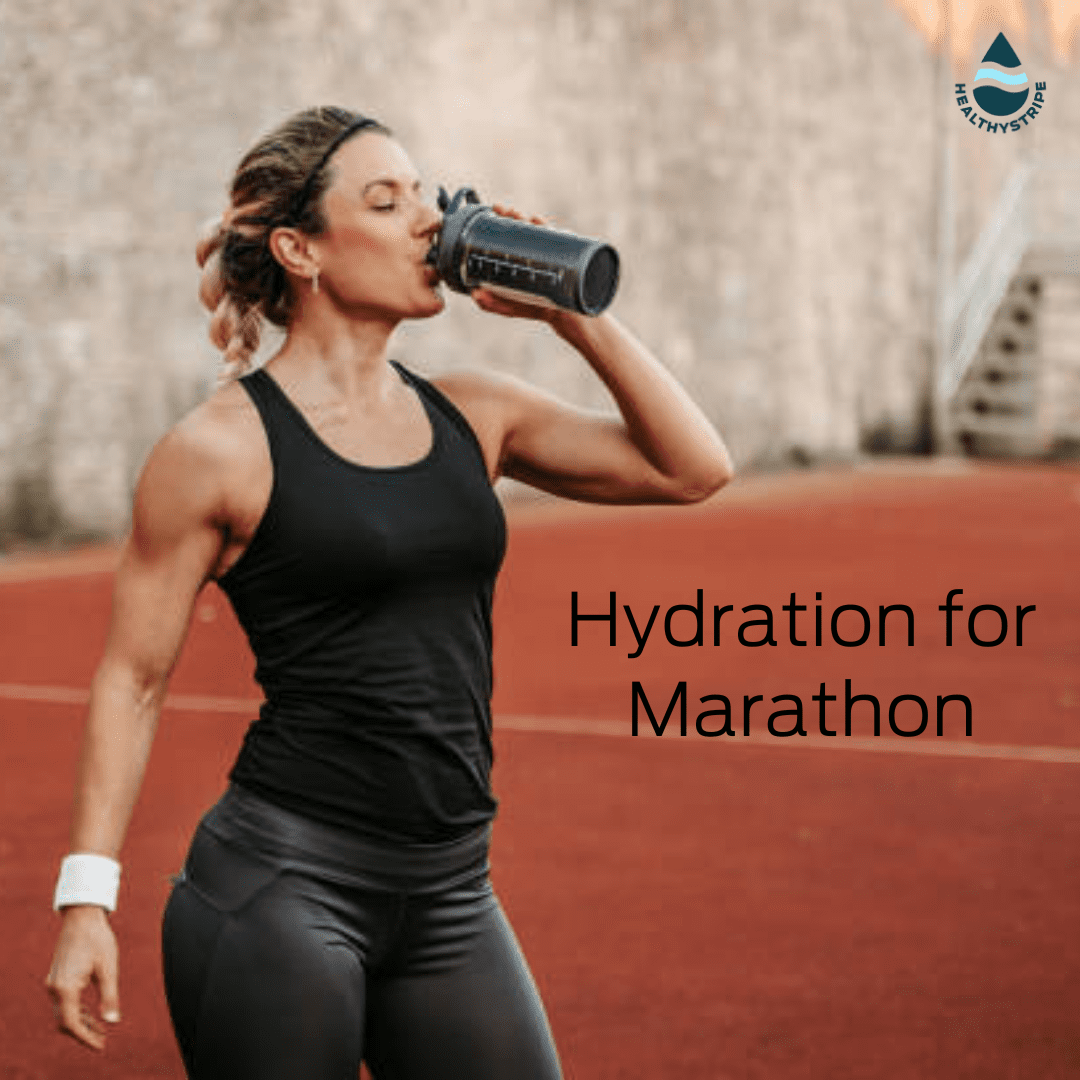Heat Stroke: Causes, Symptoms And Best Ways To Prevent

Did you ever experience the sun’s scorching heat while you were outside on a sunny day? Well, we have all been there at one time or another. One must enjoy outdoor scenarios in the best way possible, but there can be some complications when the sun is at its utmost power. One of the most common problems is what we will talk about in this article – heat stroke.
Yes, this is one pretty nasty condition that can create many problems even when you are not expecting it. In 2021, heat stroke managed to cause approximately 374 deaths across India (1).
Given the seriousness of the situation, it is more than important for people to make sure that they are completely aware of this issue and know how to prevent heat strokes in the first place. This can be done by following some precautionary measures and learning about heat stroke symptoms and treatment processes. Hence, this is what we are going to provide information on today.
Source: https://www.cdc.gov/mmwr/volumes/71/wr/figures/mm7124a6-F.gif?_=92116
What Is Heat Stroke?
Heatstroke is a severe medical emergency that poses a life-threatening risk. It typically arises from prolonged exposure to exceedingly hot and humid outdoor conditions, but excessively overheated indoor environments can also trigger it.
Heatstroke is the most critical among heat injuries and arises when the body’s core temperature reaches 104°F (40°C) or higher due to overheating.
There are two primary types of heatstroke:
- Exertional heatstroke: This heatstroke often occurs in individuals engaged in intense physical activities outdoors during hot weather. It is one of the main heat stroke causes in young people.
- Non-exertional (classic) heatstroke: This variant mainly affects older adults and people with pre-existing health conditions like diabetes. Classic heat stroke may develop gradually over several hours or days.
It is highly important to treat heat stroke as soon as it occurs; otherwise, it can cause severe damage to the body’s internal organs, including the brain. The results are often fatal when proper treatment is not administered. According to reports, heat strokes are fatal in up to 80% of all cases (2).
To better understand the heat stroke symptoms and causes of heat stroke, as well as preventive measures and treatments, continue reading.
What Are The Symptoms Of Heat Stroke?
Heat stroke can manifest rapidly or gradually and is a critical medical condition that demands immediate attention. Specific groups, such as adults over 65 and infants, face increased vulnerability to heatstroke. Individuals engaging in physical activities or labor-intensive outdoor jobs in hot and humid weather are also at higher risk (3). Nevertheless, heatstroke can affect anyone, making it crucial to recognize its symptoms.
The heat stroke signs encompass a range of indicators:
- High fever is one of the most common symptoms when the skin is intensely hot.
- Sweating Abnormalities: If someone suffers from heat stroke, they will sweat excessively or have dry skin and cannot sweat. This condition is called anhidrosis.
- Muscle Cramps: As a response to the increasing heat of the body, one might suffer from muscle cramps as well.
- Increased Pulse and Heart Rate: Since the body is trying to cope with the stress from the heat, the heart rate and pulse rate will also increase.
- Low Blood Pressure: Heat stroke might also cause a drop in blood pressure, which is extremely critical.
- Rapid Breathing: Due to the body regulating the temperature, the breathing will become rapid or shallow.
- Loss of Balance: The person suffering from a heat stroke cannot maintain their balance appropriately.
- Disorientation: Some people also experience disorientation due to heat stroke.
- Irrational or Erratic Behavior: Since the heat tends to impact the brain, the person will also show unusual behavior.
- Dizziness: The person might also experience dizziness due to the heat.
- Headache: Intense headaches are common due to heat stroke.
- Nausea and Vomiting: Nausea and vomiting are common signs of heat stroke.
- Dehydration: The person will also experience dehydration or unquenchable thirst due to the problem.
- Physical Collapse: If the body cannot control the temperature properly, the person might also physically collapse during the heat stroke.
- Coma: There are some severe cases in which heat stroke can lead to coma (3).
Ensuring proper medical attention for the person suffering from heatstroke is vital. Intervention on time and medical care might save the person’s life. Also, remember that prevention is the best care; if the weather is too humid or hot, one must stay hydrated and refrain from participating in many outdoor activities.
Symptoms of Heat Stroke in Babies and Infants
Small babies and infants are not able to efficiently regulate their body temperature. So, they may be susceptible to this condition. In the case of infants and babies, heatstroke can lead to major complications. So, parents need to learn all the tell-tale signs of heat strokes in children.
- Fever of 105° F (40.5° C) or higher: The heat stroke temperature in children is pretty much the same as in adults (4).
- Loss of Consciousness: The baby or infant might lose consciousness due to a heat stroke.
- Hot, Dry, or Sweating Skin: Either the child’s skin might be too dry or too sweaty.
- Red, Flushed-Looking Skin: Due to heat’s impact on the child, the skin might look red.
- Rapid Pulse or Heart Rate: The baby’s heartbeat might increase due to the complication.
- Shallow Breathing: They might experience shallow and irregular breathing.
- Lethargy or Sluggishness: The child might also suffer from sluggishness or lethargy.
- Confusion: This condition can also lead to confusion in children.
For parents, it is important to make sure that they know if their child is experiencing heatstroke. If that is the case, then immediate medical intervention is necessary. Also, parents need to ensure that they are taking all the important preventive measures to ensure that the child can avoid the risk of mild heat stroke symptoms in infants and young children.
How To Prevent And Treat Heat Stroke?
The following suggestions should be kept in mind if you want to avoid heat strokes and stay safe in hot weather:
- Keep Hydrated: Even if you don’t feel thirsty, stay hydrated throughout the day. Avoiding alcohol and caffeine is advised because they can cause dehydration. This is among the best ways for heat stroke prevention.
- Dress Properly: To assist your body in successfully regulating its temperature, dress in comfortable, light-colored clothes that fit loosely. Wear hats with wide brims and sunglasses to shield yourself from harsh sunlight.
- Limit Outdoor Activities: If possible, stay indoors during the warmest hours of the day, often between 10 a.m. and 4 p.m. If you must be outside, frequently rest in the shade or somewhere cool.
- Use Sunscreen: Make sure that the sunscreen you apply has a high SPF to ensure your skin is properly protected. This also helps when it comes to avoiding sunburn.
- Keep Cool: To lower body temperature, use fans, air conditioning, or cool showers and baths. During heat waves, think about spending time indoors where there is air conditioning.
- Recognize the Red Flags: Know the signs of heat-related disorders, including sunstroke (high body temperature, confusion, and loss of consciousness) and heat exhaustion (heavy perspiration, weakness, and dizziness).
- Steer clear of hot cars: Never leave kids or pets alone in a parked car since the temperature can quickly increase to fatal levels.
- Keep an eye on Vulnerable People: During heat waves, watch elderly people, children, and people with chronic medical conditions, as they are more prone to heat-related illnesses.
- Be Mindful of Medications: Some medications can increase the risk of heat stroke, so you must steer clear of them.
Treatment for Heat Strokes
When it comes to diagnosing a heat stroke, the process usually involves a physical examination and the assessment of all the symptoms. If the doctor suspects that the patient is suffering from a heat stroke, the most effective method of heat stroke treatment remains to monitor the temperature by using a thermometer fitted in a Foley catheter, a kind of urinary catheter (5).
Once the condition has been diagnosed, the medical team will begin the heat stroke treatment process, where the main goal is to lower the body’s temperature. Now, there are various techniques that are used by the medical team to achieve this properly.
- First of all, the patient is immersed in cold water.
- Evaporative cooling is another important method for using air and misted water.
- Cooling blankets are administered to the patient.
- Ice packs are also used in some cases.
- Cooled IV fluids remain a very effective treatment method.
- Catheters containing cold water are then introduced to the throat or rectum of the patient, and the process is called cold-water lavage.
It is essential to ensure that the body’s temperature is reduced to minimize the risk of heat illness such as brain damage, heart problems, or kidney damage. In cases where a person has lost consciousness, the cooling measures help in resuscitation.
Throughout the process, the doctors will monitor the body’s temperature to minimize the risk of hypothermia.
When necessary, doctors may recommend muscle relaxants to stop shaking, which can cause an increase in body temperature. Additionally, drugs might be given to prevent seizures.
Intravenous fluids may be given to rehydrate the person in cases of dehydration.
The doctor can suggest additional testing once the patient’s condition has stabilized to evaluate any potential harm to the person’s internal organs or muscles. These tests could consist of imaging studies like X-rays, electrocardiograms, blood tests to check potassium, sodium, and blood gas levels, urine tests to check kidney function, and tests to check muscle function.
It is typical for people who have experienced heatstroke to exhibit thermal instability, which makes it difficult to control body temperature. For this reason, even if there are no difficulties, patients may be kept under surveillance in the hospital for a day or two.
Recovery From Heat Strokes
Your body temperature may fluctuate considerably following heatstroke, usually for several weeks. It’s critical to put relaxation first during this time and to refrain from physically demanding activities. Preventive actions to lower the likelihood of a recurrence are essential for accelerating the healing process.
Seeking advice from a healthcare professional is advised to make sure that your heat stroke recovery goes well. They might advise routine monitoring tests to monitor the health of your kidneys and liver throughout the healing process. Speaking with a doctor immediately is critical if you suffer unexpected symptoms, such as decreased urine production, disorientation, or breathing difficulties. Following these safety measures and medical guidance can help prevent the issue properly.
What Are The Differences Between Heat Stroke And Heat Exhaustion?
Heat stroke and heat exhaustion can be defined as ailments that result from heat exposure. However, there are some differences between the two conditions regarding severity and symptoms.
Heat exhaustion is a heat-related sickness that develops when the body overheats and becomes dehydrated due to physical activity in hot weather or extended exposure to high temperatures. Heavy sweating, exhaustion, weakness, headaches, dizziness, cramping in the muscles, nausea, vomiting, and calm, wet skin are typical signs of heat exhaustion. Normal body temperature is raised but not abnormally so; it usually falls below 104°F (40°C). A person suffering from heat exhaustion could feel dizzy or faint, yet they are still cognizant and aware of their surroundings.
On the other side, heat stroke is a serious, fatal, heat-related sickness. When the body’s cooling systems malfunction, the core body temperature increases to hazardous levels. A high body temperature (over 104°F or 40°C) is one of the signs of heat stroke. The person will also suffer from sweating, rapid breathing, confusion, increased heart rate, unconsciousness, dry skin, etc. In the case of heat stroke, the body temperature becomes extremely dry.
When To Seek Medical Attention For Heat Stroke?
When you experience symptoms like a high body temperature (above 104°F or 40°C), confusion, agitation, rapid and shallow breathing, a strong and rapid pulse, skin that feels hot and dry (lack of sweating), a throbbing headache, dizziness, nausea, or unconsciousness, you should seek immediate medical attention for heat stroke.
Delaying medical care can result in serious problems, such as organ damage and death. Call emergency services immediately if you or someone else is displaying these symptoms, and while you wait for assistance, take immediate action to cool the individual down.
Bottom Line
The body’s system for controlling temperature malfunctions due to extended exposure to high temperatures and humidity can result in a serious and even fatal condition known as heat stroke. You can prevent and treat heat strokes effectively by following the advice in this article.
What are the heat stroke symptoms?
High body temperature, hot, dry skin, a rapid heartbeat, headache, nausea, dizziness, confusion, and unconsciousness are all signs of heat stroke. Muscle cramps, trouble breathing, excessive sweating, or lack of sweating are possible additional symptoms. If not treated right away, complications from heat stroke can be fatal.
What medicine helps with heat stroke?
For heat stroke, there is no particular medication. The primary goals of treatment are symptom management and body cooling. Medical personnel can infuse IV fluids to replenish lost fluids and balance electrolytes. The body’s temperature can be lowered using physical cooling techniques like ice packs or cooling blankets. To treat other issues or to stop seizures, medication may be recommended. Staying hydrated is also important.
Can heat stroke be cured?
Although heat stroke is treatable, prompt medical attention and early detection are essential for a full recovery. Rapidly reducing body temperature and stabilizing vital signs are the main goals of emergency medical care. Hospital treatment may include rehydrating intravenous fluids, cooling techniques like ice packs or misting, and complication monitoring. Long-term impacts could call for specialized care.
What is the first aid for heat exhaustion?
The injured person must be moved as soon as possible to a cool, shaded area as part of first aid for heat exhaustion. Encourage them to get some rest and to hydrate well. Take off or loosen extra clothing, then cover the skin with cool, moist garments. To help with cooling, if at all possible, use a fan or create a breeze. If symptoms continue or get worse, get medical care immediately.
What are the side effects of heat stroke?
Organ damage, notably to the brain, heart, kidneys, and muscles, is a potential side effect of heat stroke. There may also be neurological problems, including seizures or comas. Another potential risk is rhabdomyolysis, where toxic compounds are released into the bloodstream due to muscle breakdown. If not treated quickly, heat stroke can be fatal and even cause death.
How long does heat stroke last?
Heat stroke can last for various lengths depending on its intensity and how quickly it is treated. While a full recovery might take a few days in mild cases, it might take weeks in severe cases. Even after therapy, some people may endure long-term consequences like organ damage or neurological problems.
What are the heat stroke symptoms?
High body temperature, hot, dry skin, a rapid heartbeat, headache, nausea, dizziness, confusion, and unconsciousness are all signs of heat stroke. Muscle cramps, trouble breathing, excessive sweating, or lack of sweating are possible additional symptoms. If not treated right away, complications from heat stroke can be fatal.









